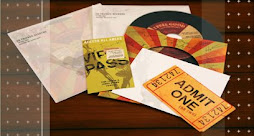So you need a web site designed. Or a new logo. Or a fancy-pants brochure to sell your amazing product (your product IS amazing after all!). You want the best-of-the-best, but you also have a budget to keep in mind. What to do, what to do? There are so many graphic design options available, but you want to make the right decision. We can help! Here are just a few of the many, many, many reasons that you should work with a professional graphic design team on your next print or web project.
Quality, Quality, Quality.
Anyone can learn the necessary design programs, but it takes a special kind of talent to take an idea and turn it into something amazing. It is not enough just to make a brochure or a web site look good, it has to serve a purpose. Are you trying to sell a product, promote a service or raise money for a charity? Whatever your goal, you need a creative team that has the skills to make your marketing materials sing!
Know-How.
You’re never too old to learn a new trick. That’s our way of thinking (not that we’re old…29 is definitely NOT old!). We’re constantly learning new programs, keeping up-to-date on the latest SEO techniques, and picking the brains of printers so we have the knowledge to provide our customers with the best end product possible. After all, you deserve the best.
Customer Service.
Above all, you need a graphic design team that knows how to treat a customer…like they are the only one who exists! We make sure to put your project first and to give it our full attention. If you’re not happy, we’re not happy. And we like to be happy!
You Get What You Pay For.
It’s a tough economy and we understand that everyone is trying to cut costs and save money. But remember, you get what you pay for. You could hire a designer who promises to design your new brochure for really cheap. Too-good-to-be-true cheap. But after countless rounds of designs, you’re not happy with the outcome and instead of saving money, you’ve actually wasted it. You need a creative team that understands your needs and can deliver. In the long run, your initial investment is worth more if the final product effectively sells your company or product.
We hope this makes your decision a little easier. If you have any questions, please ask us! At Moxie, we are here to serve our customers, to help YOU SUCCEED!


